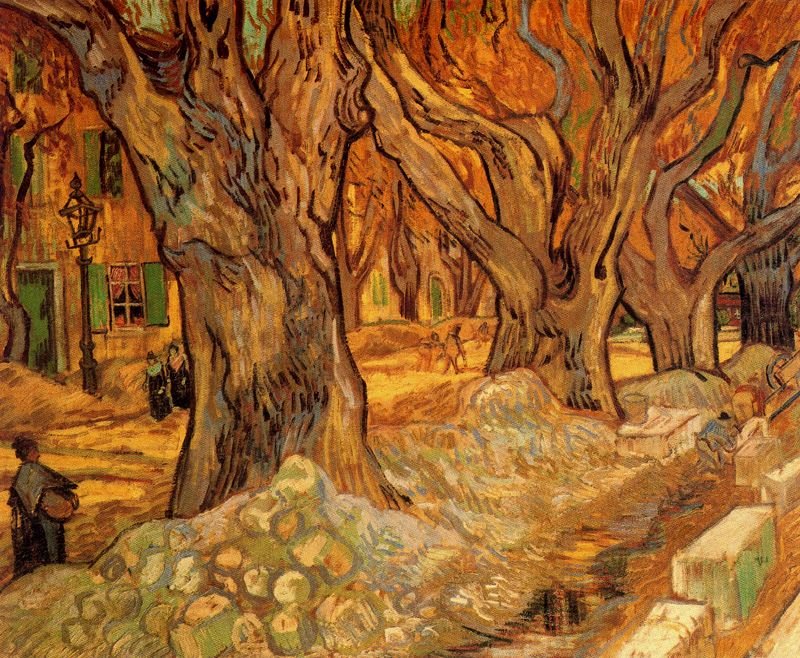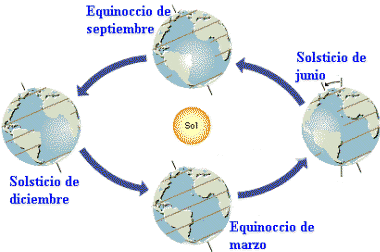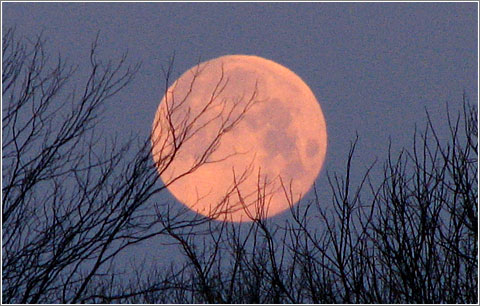
Camineros en el Boulevard de Victor Hugo en Saint Remy
Van Gogh 1889
Ademais da caída das follas e do cambio de hora do próximo 26 de outubro, desvelámosche algunhas curiosidades da estación que acaba de comezar:
.
A nova estación chegou con choiva e baixada de temperaturas
Acábase o verán. Por si non nos queriamos decatar, as choivas rexistradas en toda España durante os últimos días e as baixadas de temperaturas puxéronnos alerta. Entramos nunha nova estación que durará 89 días e 20 horas, polo que finalizará axiña que como chegue o inverno, o 22 de decembro próximo. Pero Que nos espera durante os seguintes meses?
Para empezar, o domingo día 26 de outubro terá lugar o cambio de hora, recuperando o horario de inverno. É algo que se produce, como é habitual, ao iniciarse o último domingo de outubro. Ás 3 da madrugada hora peninsular do domingo día 26 haberá que atrasar o reloxo ata as 2 co que este día terá, oficialmente, unha hora máis.
Esta é a época do ano en que a lonxitude do día acúrtase máis rápidamente. O Sol sae polas mañás cada día un pouco máis tarde que o día anterior e ponse antes, sendo o acortamiento do día especialmente apreciable polas tardes. En definitiva, ao comezo do outono o tempo en que o Sol está por encima do horizonte redúcese en case tres minutos cada día ás latitudes da península ibérica.
Este é un dos motivos que provoca unha das características máis típicas do outono, a caída das follas das árbores.
As especies caducifolias despréndense delas nesta estación porque deixan de ser útiles.
As follas utilizan a enerxía do Sol para transformar dióxido de carbono, auga e outros nutrientes do chan en diferentes moléculas que necesitan para crecer e realizar as súas funcións vitais (fotosíntesis).
Este mecanismo funciona moi ben cando as condicións ambientais son suaves. Pero cando vai frío as follas non poden cumprir a súa función e, por iso, a planta desfaise delas.
.
A nova estación chegou con choiva e baixada de temperaturas
Acábase o verán. Por si non nos queriamos decatar, as choivas rexistradas en toda España durante os últimos días e as baixadas de temperaturas puxéronnos alerta. Entramos nunha nova estación que durará 89 días e 20 horas, polo que finalizará axiña que como chegue o inverno, o 22 de decembro próximo. Pero Que nos espera durante os seguintes meses?
Para empezar, o domingo día 26 de outubro terá lugar o cambio de hora, recuperando o horario de inverno. É algo que se produce, como é habitual, ao iniciarse o último domingo de outubro. Ás 3 da madrugada hora peninsular do domingo día 26 haberá que atrasar o reloxo ata as 2 co que este día terá, oficialmente, unha hora máis.
Esta é a época do ano en que a lonxitude do día acúrtase máis rápidamente. O Sol sae polas mañás cada día un pouco máis tarde que o día anterior e ponse antes, sendo o acortamiento do día especialmente apreciable polas tardes. En definitiva, ao comezo do outono o tempo en que o Sol está por encima do horizonte redúcese en case tres minutos cada día ás latitudes da península ibérica.
Este é un dos motivos que provoca unha das características máis típicas do outono, a caída das follas das árbores.
As especies caducifolias despréndense delas nesta estación porque deixan de ser útiles.
As follas utilizan a enerxía do Sol para transformar dióxido de carbono, auga e outros nutrientes do chan en diferentes moléculas que necesitan para crecer e realizar as súas funcións vitais (fotosíntesis).
Este mecanismo funciona moi ben cando as condicións ambientais son suaves. Pero cando vai frío as follas non poden cumprir a súa función e, por iso, a planta desfaise delas.
Coa baixada das temperaturas as follas dánanse cos cristais que forma a auga xeada. Como o chan tamén se conxela, as raíces non son capaces de absorber auga nin nutrientes xa que só poden tomalos si están disoltos. Polo tanto, si non se caesen as follas, a planta morrería deshidratada ao perder auga a través delas (como parte do proceso de fotosíntesis) e non recuperala mediante as raíces.
Para evitar esta morte a árbore corta o fornezo de savia ás follas, ademais de retirarlles a clorofila e outros compostos útiles, o que explica por que se volven de cor marrón antes de caer ao chan.
.jpg)
Por que empeza agora o outono?
O inicio astronómico das estacións sucédese, por convenio, no instante en que a Terra pasa por unha determinada posición da súa órbita ao redor do Sol. No caso do outono, esta posicion é desde a que o centro do astro, visto desde a Terra, cruza o ecuador celeste no seu movemento aparente cara ao sur. Cando isto sucede, a duración do día e a noite prácticamente coinciden, e por iso, a esta circunstancia lla chama tamén equinoccio de outono. Neste instante no hemisferio sur iníciase a primavera.
O equinoccio de outono pode darse, como máximo, en catro datas distintas (do 21 ao 24 de setembro). Ao longo do século XXI o outono iniciarase nos días 22 e 23 de setembro (data oficial española), sendo o seu inicio máis tempranero o do ano 2096 e o máis tardío o de 2003. As variacións dun ano a outro son debidas ao modo en que encaixa a secuencia de anos segundo o calendario (uns son bisiestos, outros non) coa duración de cada órbita da Terra ao redor do Sol (duración coñecida como ano trópico).
Para evitar esta morte a árbore corta o fornezo de savia ás follas, ademais de retirarlles a clorofila e outros compostos útiles, o que explica por que se volven de cor marrón antes de caer ao chan.
.jpg)
Por que empeza agora o outono?
O inicio astronómico das estacións sucédese, por convenio, no instante en que a Terra pasa por unha determinada posición da súa órbita ao redor do Sol. No caso do outono, esta posicion é desde a que o centro do astro, visto desde a Terra, cruza o ecuador celeste no seu movemento aparente cara ao sur. Cando isto sucede, a duración do día e a noite prácticamente coinciden, e por iso, a esta circunstancia lla chama tamén equinoccio de outono. Neste instante no hemisferio sur iníciase a primavera.
O equinoccio de outono pode darse, como máximo, en catro datas distintas (do 21 ao 24 de setembro). Ao longo do século XXI o outono iniciarase nos días 22 e 23 de setembro (data oficial española), sendo o seu inicio máis tempranero o do ano 2096 e o máis tardío o de 2003. As variacións dun ano a outro son debidas ao modo en que encaixa a secuencia de anos segundo o calendario (uns son bisiestos, outros non) coa duración de cada órbita da Terra ao redor do Sol (duración coñecida como ano trópico).

A primeira lúa chea do outono verémola o 8 de outubro
Desde o punto de vista astronómico, no ceo matutino durante o outono de 2014 verase Júpiter e a él unirase Saturno ao final da estación. Ao principio da noite apreciarase Marte e, ata mediados de outono, Saturno. Durante o outono de 2014, produciranse dous eclipses, un total de Lúa (8 de outubro) e un parcial de Sol (23 de outubro), aínda que ningún deles será visible desde España.
A primeira lúa chea do outono darase o 8 de outubro, dándose as seguintes 29 ou 30 días despois. Neste outono sucederanse outras dúas lúas cheas: 6 de novembro e 6 de decembro.

A primeira choiva de meteoros importante do outono é a das Dracónidas, cuxo máximo dáse cara ao 8 de outubro. Outra popular no outono é a de de as Leónidas, que se sucede ao redor do 17 de novembro e que, ocasionalmente, chega a ser moi intensa. A choiva máis forte adoita ser a das Gemínidas, cuxo máximo ritmo dáse ao redor do 13 de decembro.

En canto ás constelaciones, ao redor da estrela Polar poderanse ver Cisne, Casiopea, Osa Menor e Jirafa. As constelaciones eclípticas visibles durante o outono van de Capricornio a Virgo. Por encima da eclíptica destacarán Pegaso e Andrómeda; por baixo, Ballena e Orión, así como estrélalas Sirio e Proción.

Para maior información sobre os fenómenos astronómicos do ano podes consultar o «Anuario astronómico», un libro que anualmente publica o Instituto Xeográfico Nacional.
Disfruta da estación máis colorida do ano!

